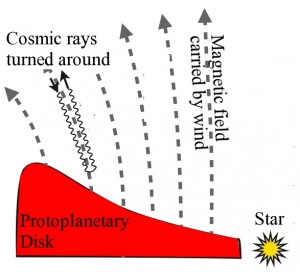
Figure 10 from Cleeves et al. (2013) showing the stellar wind driving cosmic rays away from the disk
In journal club this morning, we discussed a new paper by Cleeves, Adams, & Bergin that pointed out the important (and apparently previously unrecognized) role of stellar wind in the chemistry and dynamics of protoplanetary disks. Astronomers have long believed that cosmic rays induce significant ionization in protoplanetary gas disks around young stars. This ionization is important because (1) it drives chemical reactions, helping to set the initial compositions of planets, and (2) it causes the disk to interact with magnetic fields, producing turbulence in the disk, which affects where/how/when planets form. If, as suggested by the authors, the stellar wind can exclude cosmic rays from the inner reaches of the disk, then sufficient ionization to power these two effects requires some additional energy source. Cleeves and co. suggest decay of radio nuclides, which produces ionizing gamma radiation, may be able to take up the slack, but in our discussion, it was suggested that gamma rays might drive different chemistry from what was expected of cosmic rays.